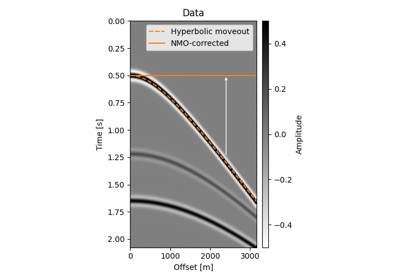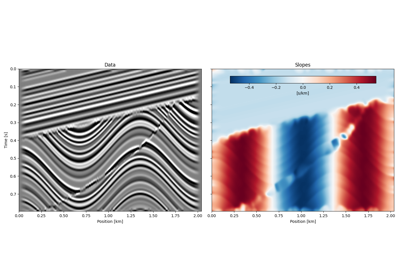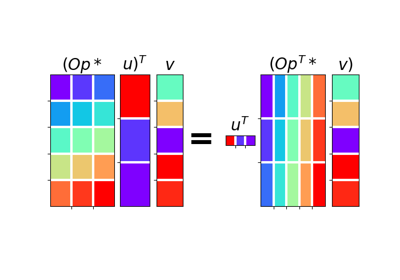pylops.utils.dottest¶
-
pylops.utils.dottest(Op, nr=None, nc=None, rtol=1e-06, complexflag=0, raiseerror=True, verb=False, backend='numpy', atol=1e-21, tol=None)[source]¶ Dot test.
Generate random vectors \(\mathbf{u}\) and \(\mathbf{v}\) and perform dot-test to verify the validity of forward and adjoint operators. This test can help to detect errors in the operator implementation.
Parameters: - Op :
pylops.LinearOperator Linear operator to test.
- nr :
int Number of rows of operator (i.e., elements in data)
- nc :
int Number of columns of operator (i.e., elements in model)
- rtol :
float, optional Relative dottest tolerance .. versionadded:: 1.18.1
- complexflag :
bool, optional Generate random vectors with
0: Real entries for model and data1: Complex entries for model and real entries for data2: Real entries for model and complex entries for data3: Complex entries for model and data
- raiseerror :
bool, optional Raise error or simply return
Falsewhen dottest fails- verb :
bool, optional Verbosity
- backend :
str, optional Backend used for dot test computations (
numpyorcupy). This parameter will be used to choose how to create the random vectors.- atol :
float, optional Absolute dottest tolerance .. versionadded:: 1.18.1
- tol :
float, optional Dottest tolerance .. deprecated:: 2.0.0
Use
rtolinstead.
Raises: - ValueError
If dot-test is not verified within chosen tolerances.
Notes
A dot-test is mathematical tool used in the development of numerical linear operators.
More specifically, a correct implementation of forward and adjoint for a linear operator should verify the following equality within a numerical tolerance:
\[(\mathbf{Op}\,\mathbf{u})^H\mathbf{v} = \mathbf{u}^H(\mathbf{Op}^H\mathbf{v})\]- Op :


